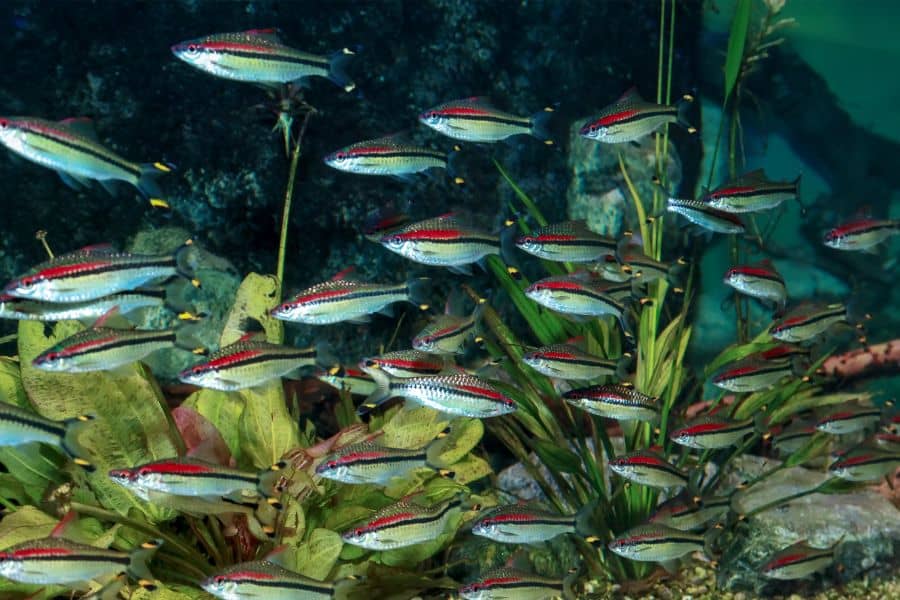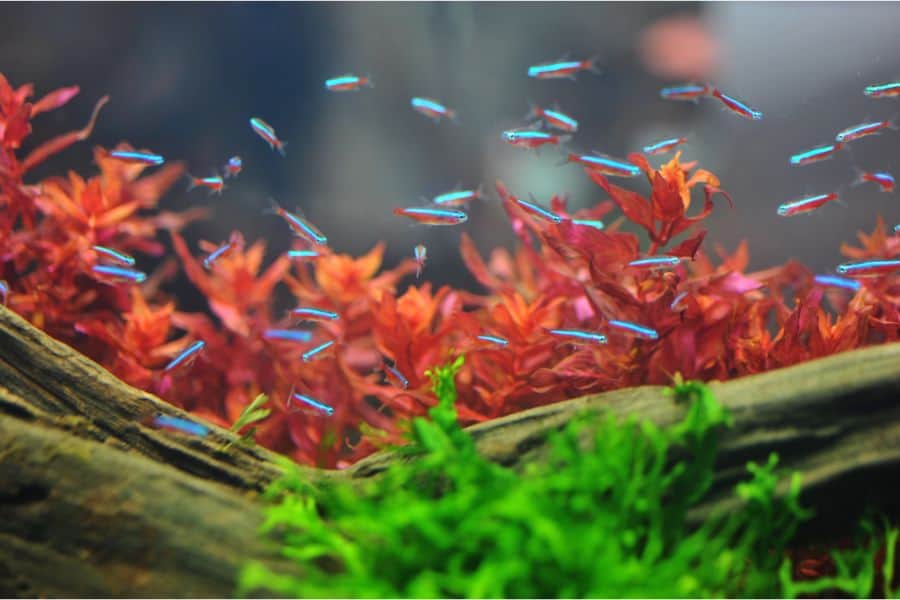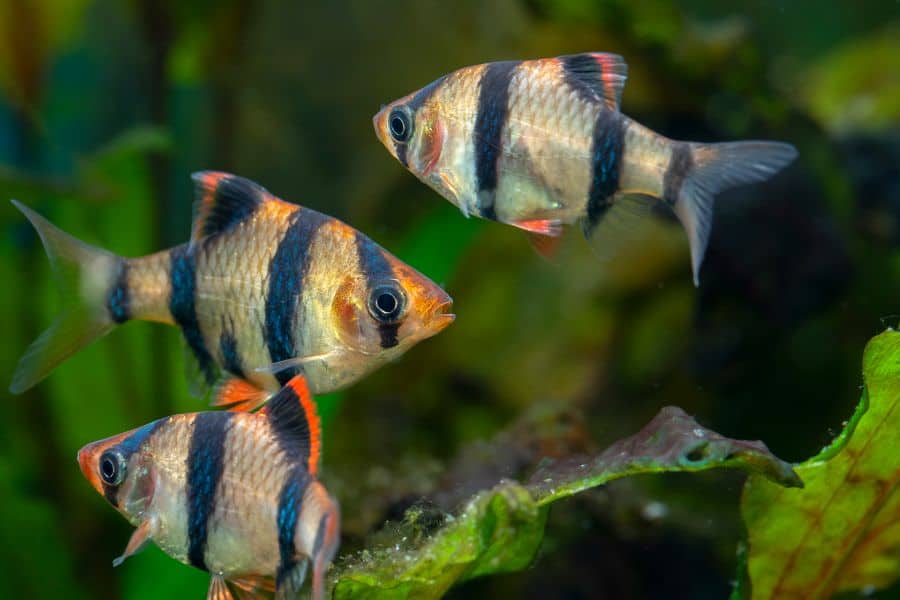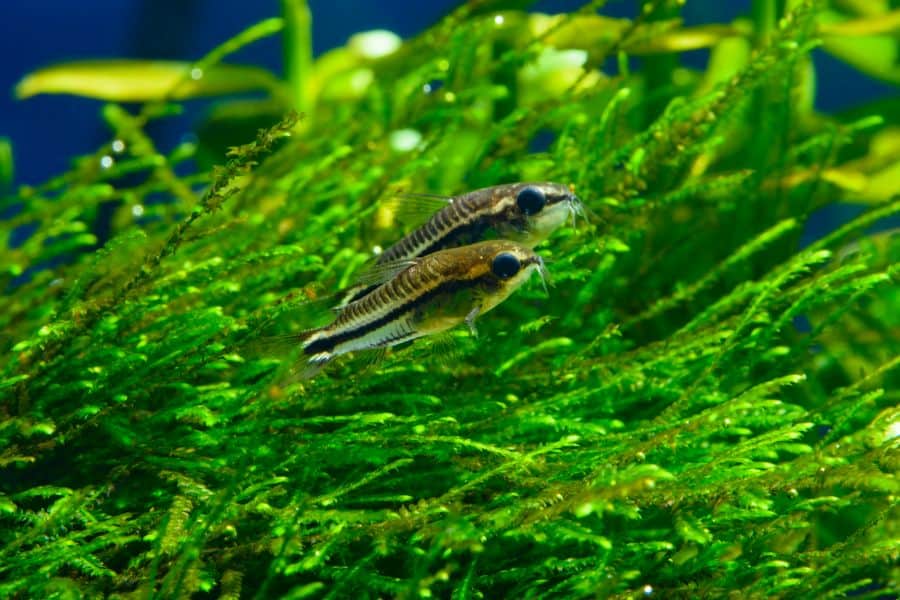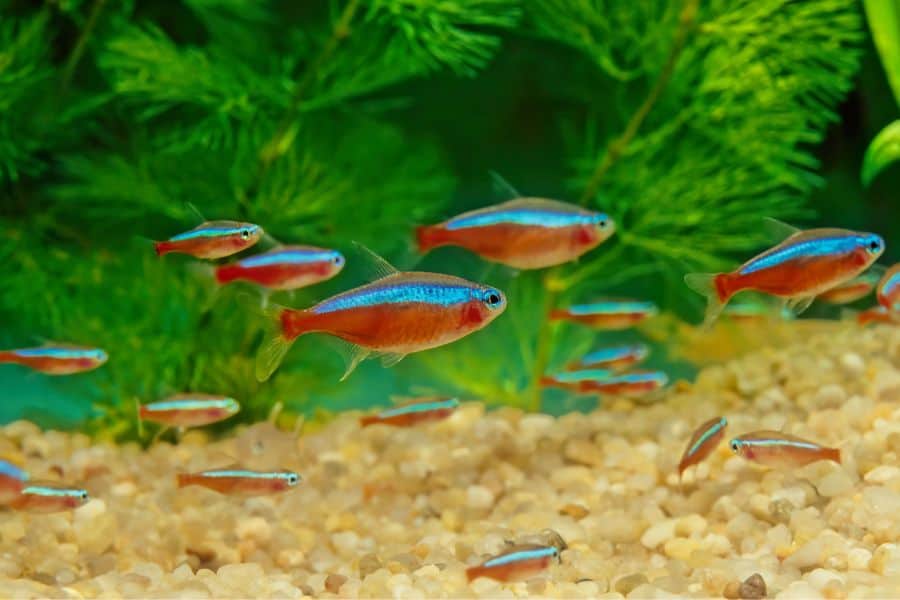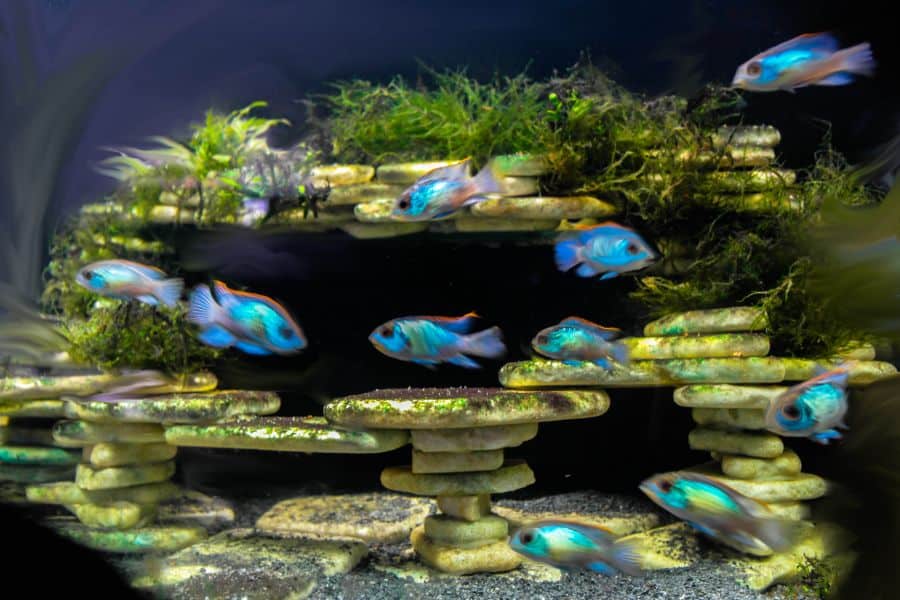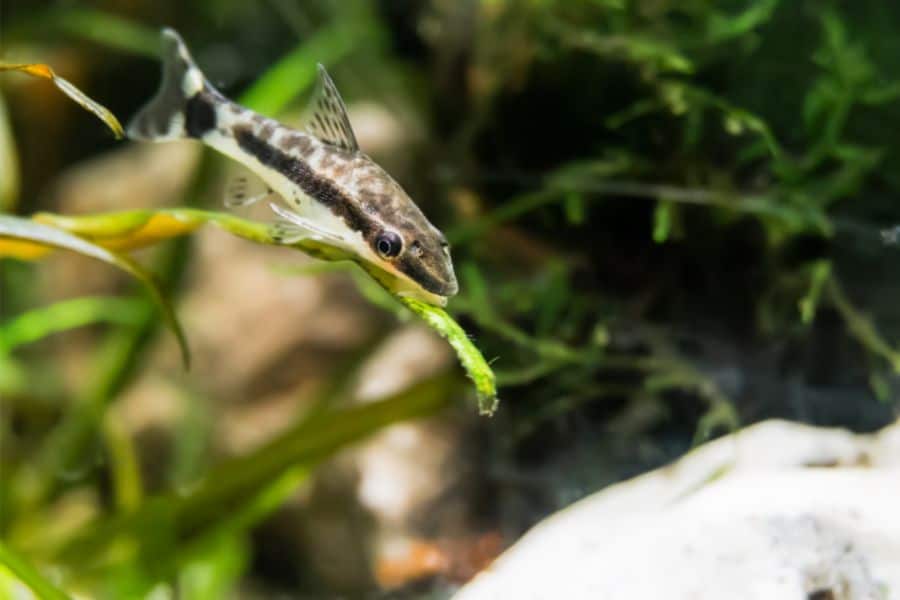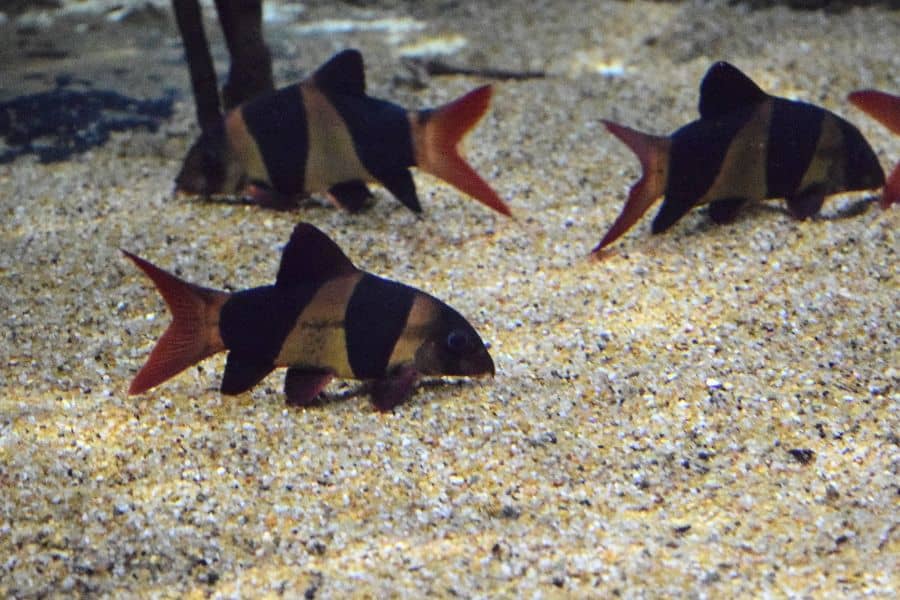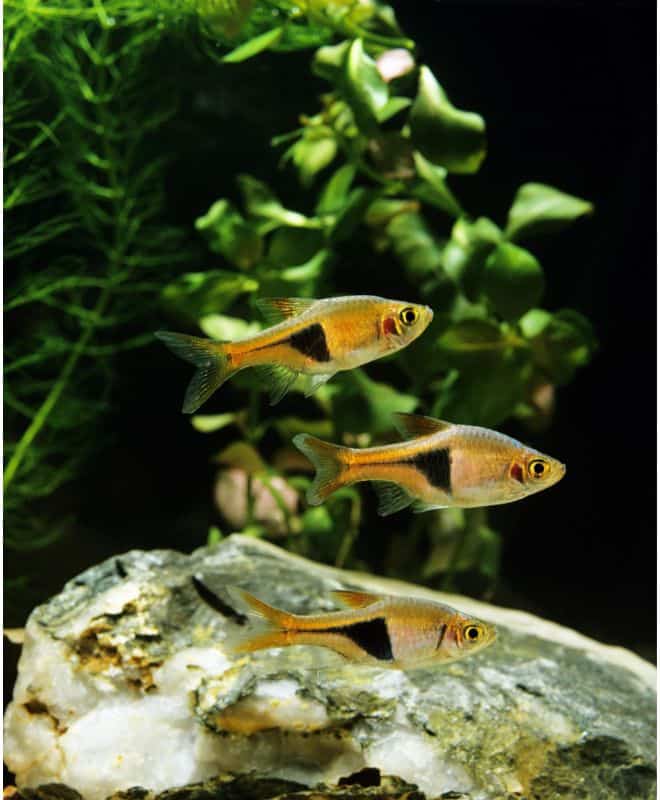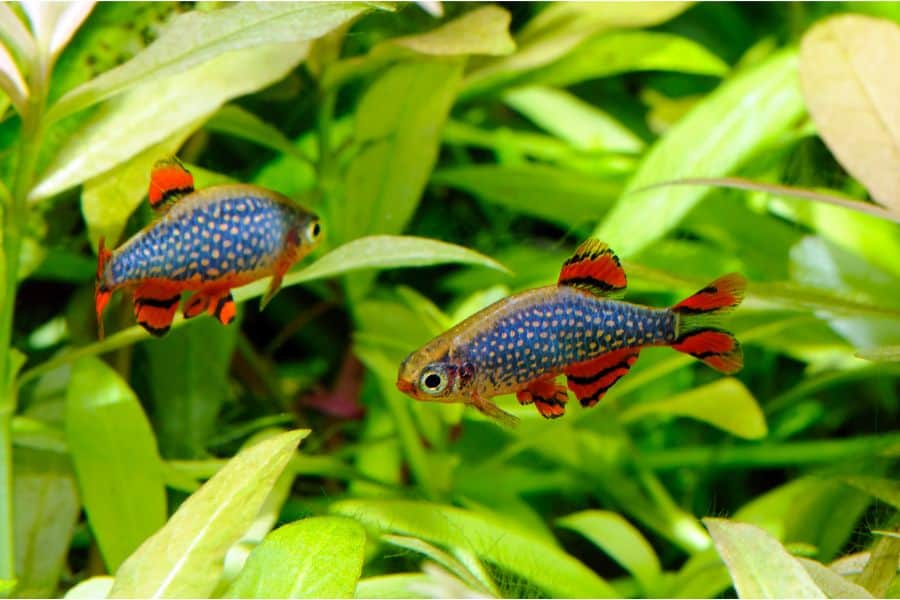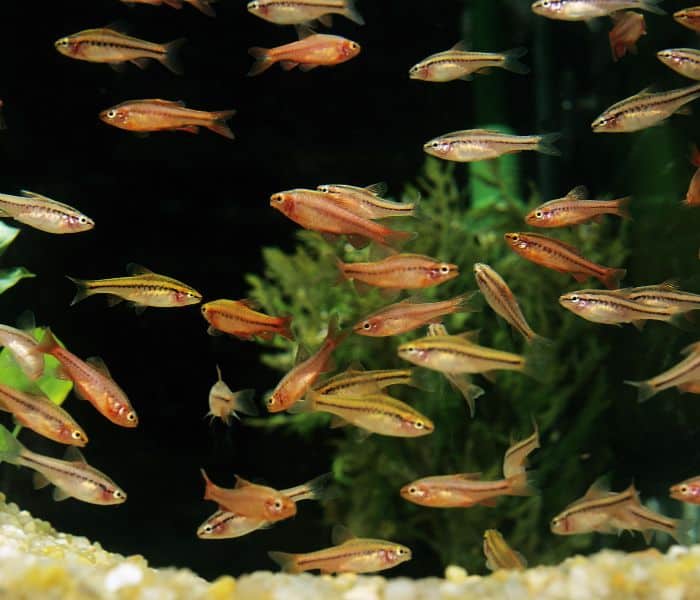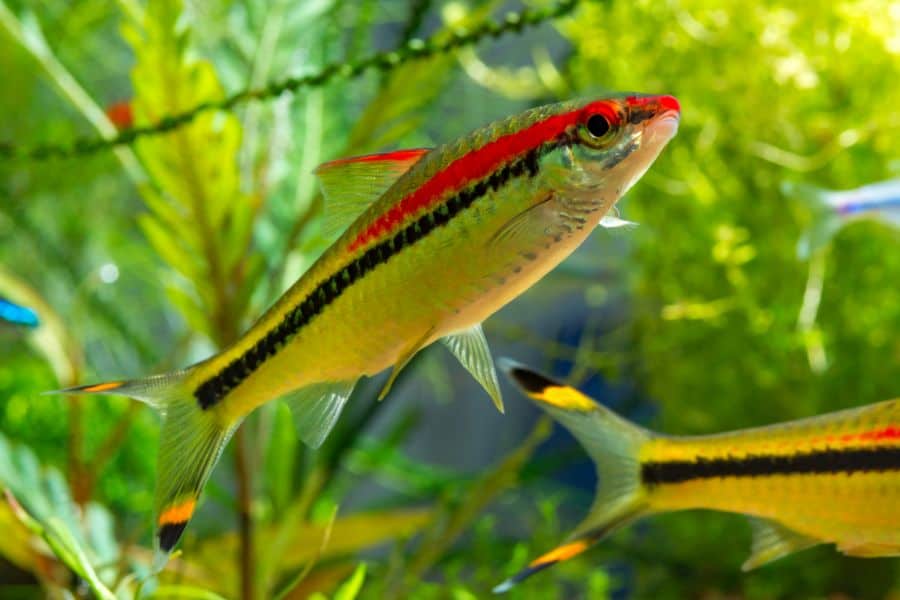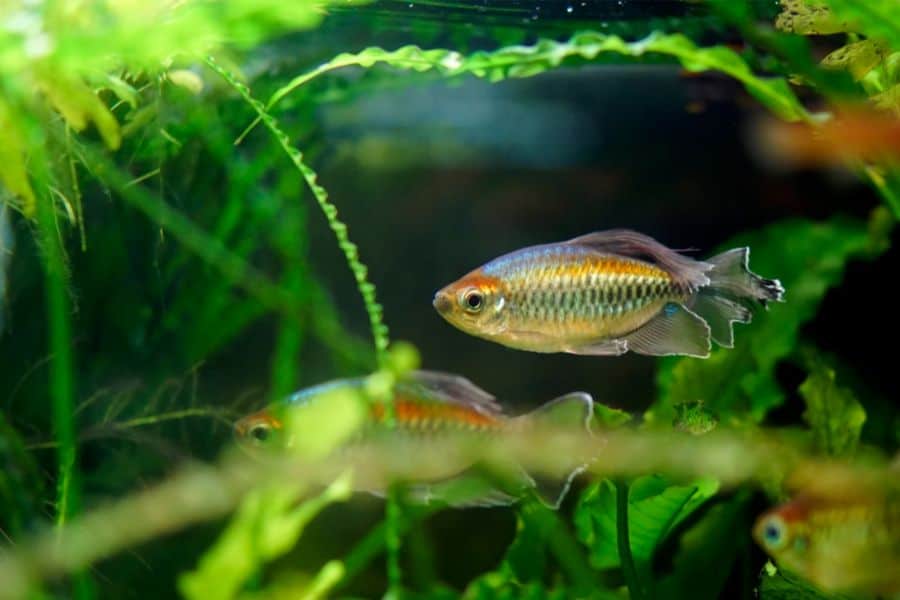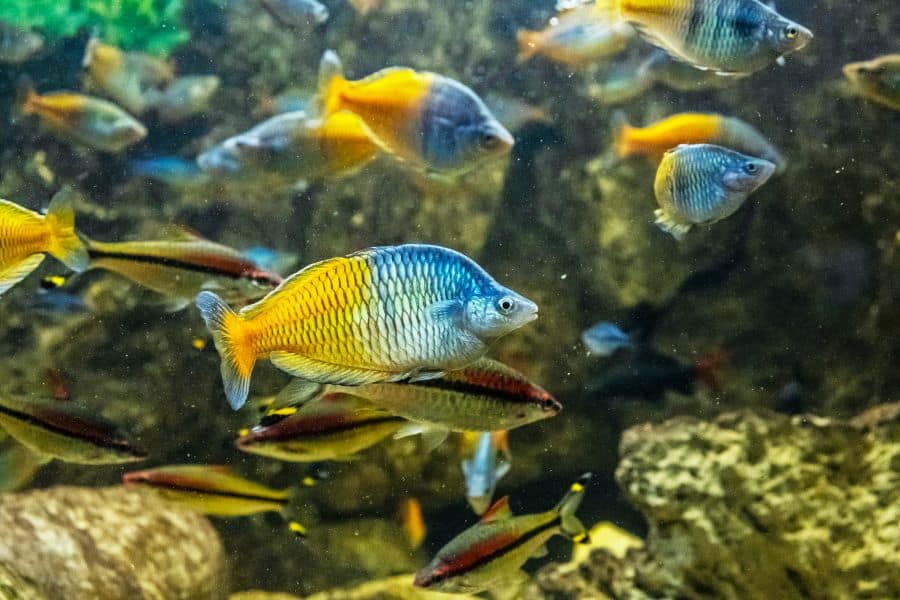Few things are more fascinating than watching schooling aquarium fish play in their beautiful habitat. It’s easy to wonder: What’s the best schooling fish you can put in your home aquarium?
That said, beginner and even intermediate aquarists can find it overwhelming to decide which species to keep for their latest aquarium. After all, there are hundreds of schooling fish species around, and so many factors to think of.
In this article, we’ll talk about various popular, fascinating, and beautiful freshwater schooling fish you’d love to have in your tank, along with essential information and care requirements.
What is Schooling?
Before we get into the best schooling fish you can get for your aquarium, let’s first talk about what exactly “schooling” is in fish terms and how it differs from the similar-sounding term “shoaling.”
Simply put, schooling is when fish form a tight group that swims together as one body. These fishes move and swim together in the same direction without any “leader.”
In a true school composed of thousands of individuals, the fish move as one solely by coordinating with their neighbors! They do this to intimidate and confuse predators.
On the other hand, a fish shoal is a loose organization of fish that might be doing their own thing. They don’t move tightly in one direction like a school, but they still form a discernible group.
In the aquarium, you can witness the dazzling schooling phenomenon of specific species.
The 15 Best Schooling Fish Species
Without further ado, let’s dive right into our list of the 15 best schooling fish species.
1. Neon Tetra
- Scientific name: Paracheirodon innesi
- Care level: Easy
- Adult size: 1 inch
- Temperament: Peaceful
- Diet: Omnivore
- Minimum school size: 8
- Ideal tank size for school: 15 gallons
- Standout feature: Dazzling colors
Aquarium stores across the country always have this aquarium hobby staple.
Neon tetras are not only stunning with their bright colors but also add life and movement to your aquarium. They’re very active and playful, not to mention beautiful and hardy, making them a popular choice for both beginners and experienced hobbyists alike.
They’re also quite peaceful fish and can be kept with other peaceful community fish. However, because of how active they are, they do need a larger tank size to keep up with their activity levels.
2. Tiger Barbs
- Scientific name: Puntigrus tetrazona
- Care level: Easy
- Adult size: 2-3 inches
- Temperament: Semi-aggressive
- Diet: Omnivore
- Minimum school size: 6
- Ideal tank size for school: 25 gallons
- Standout feature: Tiger-like stripes
Tiger barbs can give any home aquarium a wild, natural look — thanks to their vibrantly striped coloration.
This fish species is another extremely popular choice for many freshwater aquariums, and it’s easy to see why. Tiger barbs have colors that pop out of the aquarium, plus dynamic and playful personalities to match. They’re incredibly hardy and adaptable, too.
Because of this, they’re marketed as one of the best beginner community aquarium fish species around. Although inexperienced aquarists need to beware, tiger barbs can be aggressive and often fight or nip the fins of other long-finned fish.
That said, while beginners can handle this species easily, they need to make adequate preparations in terms of tank setup first. Tiger barbs need 25 gallons of space to be comfortable, more than most beginner aquarists typically start with.
3. Pygmy Corydoras Catfish
- Scientific name: Corydoras pygmaeus
- Care level: Easy
- Adult size: 1 inch
- Temperament: Peaceful
- Diet: Omnivore
- Minimum school size: 6
- Ideal tank size for school: 15 gallons
- Standout feature: Small size
Pygmy corydoras are a delightfully tiny addition to any peaceful freshwater aquarium.
These tiny catfish boast an endearing, cute look, measuring just around 1 inch. They have an unusual shape and clean gray and white color, bisected by a thick black line. They also sport adorably large eyes that add to their charm.
Pygmy cories thrive in large numbers. They’re frequently seen grazing on the aquarium substrate,, socializing with their peers while feeding on fallen food. Since they mostly stay on the bottom of the tank, they prefer long rather than tall tanks.
They’re peaceful, often skittish, and do well with tankmates who leave them alone.
4. Cardinal Tetra
- Scientific name: Paracheirodon axelrodi
- Care level: Moderate
- Adult size:5 – 2 inches
- Temperament: Peaceful
- Diet: Omnivore
- Minimum school size: 8
- Ideal tank size for school: 15 gallons
- Standout feature: Larger size and deep red colors
Cardinal tetras look very similar to their cousins, the neon tetras, but they’re an entirely different fish species.
They even have the same coloration, though cardinal tetras have more and deeper reds in their larger bodies.
Cardinal tetras also have the same general attitude, albeit a bit more challenging to care for, especially wild-caught ones.
That’s because this species can be less tolerant to changes in the water parameters and environment. They’re also more difficult to breed in captivity and, therefore, less popular in stores.
Nevertheless, this species is still an excellent selection if you want a larger, more colorful version of the neon tetra.
5. Emperor Tetra
- Scientific name: Nematobrycon palmeri
- Care level: Easy
- Adult size:5 inches
- Temperament: Peaceful
- Diet: Omnivore
- Minimum school size: 6
- Ideal tank size for school: 15 gallons
- Standout feature: Beautiful fins
If you want a fancy and dazzling schooling tetra in your aquarium, there’s nothing better than an emperor tetra.
With their long and yellow-tipped fins, they have a distinguished appearance that sets them apart from their more well-known cousins. Aside from their fantastic look, they’re also adaptable and thrive in many different tank types, making them great for beginner tanks.
They thrive best in schools and love wide open areas to explore and frolic in, so the bigger the tank, the better they’ll adapt.
This fish is known to display beautiful, vivid colors when they feel comfortable and safe. With a well-maintained environment, you can enjoy these fish at their most beautiful.
6. Otocinclus Catfish
- Scientific name: Otocinclus sp.
- Care level: Easy
- Adult size: 2 inches
- Temperament: Peaceful
- Diet: Herbivore
- Minimum school size: 6
- Ideal tank size for school: 15 gallons
- Standout feature: Superb tank cleaning abilities
Often affectionately called Ottos, this small, unassuming catfish is a widely recognized hero of the hobby.
These fish are known for their voracious appetite for algae — they eat almost all kinds and can completely clean up an infested tank in no time. They have a streamlined body shape and signature sucker-like mouth, which they use to graze on algae everywhere in the tank.
Oto cats are excellent choices for beginner and experienced aquarists alike. They’re peaceful, hardy, shy, and incredibly useful in many situations.
However, they’re sensitive to poor water quality, so maintaining good filtration and regular water changes is crucial.
7. Clown Loach
- Scientific name: Botia macracantha
- Care level: Advanced
- Adult size: 6 – 8 inches
- Temperament: Peaceful
- Diet: Omnivore
- Minimum school size: 5
- Ideal tank size for school: 75+ gallons
- Standout feature: Vivid striped color
The clown loach is a delightful and iconic fish in the aquarium world, known far and wide for its vibrant colors and playful behavior.
Clown loaches are more suited for intermediate to advanced aquarists due to their specific care requirements.
These fishes are large schooling fish for aquarium setups, reaching up to a foot in length, so a spacious tank is essential. Plus, they’re social creatures and thrive in groups, so a school of five or more is recommended. They’re also quite susceptible to diseases, such as ich.
With the proper care and environment, these gentle giants can bring color and charming energy to your tank.
8. Harlequin Rasbora
- Scientific name: Trigonostigma heteromorpha
- Care level: Easy
- Adult size:5 inches
- Temperament: Peaceful
- Diet: Omnivore
- Minimum school size: 8
- Ideal tank size for school: 15 gallons
- Standout feature: Black “harlequin” pattern
If you want a low-maintenance, easy-to-care-for, yet visually striking schooling fish, the harlequin rasbora is precisely what you’re looking for.
These fish have slender bodies with a black triangular patch on their upper half, which contrasts beautifully with their silvery-gold base color, hence their “harlequin” name.
This unique appearance makes them a popular schooling aquarium fish for beginners and veterans alike.
Harlequin rasboras tolerate a wide range of conditions, are peaceful even among other species, and become incredibly playful and social when in a group of 8 or more.
This popular species is known for its active and playful nature, and its schooling behavior creates a mesmerizing display in any aquarium.
9. Celestial Pearl Danio
- Scientific name: Danio margaritatus
- Care level: Easy
- Adult size: 1 inch
- Temperament: Peaceful
- Diet: Omnivore
- Minimum school size: 6
- Ideal tank size for school: 15 gallons
- Standout feature: Mesmerizing pattern set in deep blue color
Also often called the galaxy rasbora, this tiny yet captivating fish forms mesmerizing schools that are simply a visual delight.
These fish are renowned for their stunning, iridescent silver and orange dots set in a dark blue body resembling a starry night sky.
This unique appearance is magnified whenever you put them in a large school, which also brings out their playfulness as they feel more secure. You’ll see them darting around the tank, exploring every nook and cranny, and playing with their friends.
Their vibrant colors and charming behavior make them a delightful addition to any freshwater aquarium.
10. Espe’s Rasbora
.jpg)
- Scientific name: Trigonostigma espei
- Care level: Easy
- Adult size: 1 inch
- Temperament: Peaceful
- Diet: Carnivore
- Minimum school size: 8
- Ideal tank size for school: 15 gallons
- Standout feature: Deep red color
The Espe’s Rasbora is a lesser-known schooling species that also deserves your love.
They feature an incredible fiery red-orange coloration on their bodies, contrasting beautifully with a distinctive black triangular patch near their tails.
They look even better in large schools, with their colors incredibly standing out over foliage that mimics their natural habitat.
They’re also quite small, which means that you can house them in smaller setups. Alternatively, you can accommodate more of them in a bigger aquarium for a truly stunning aesthetic effect.
11. Cherry Barb
- Scientific name: Puntius titteya
- Care level: Easy
- Adult size: 2 inches
- Temperament: Peaceful
- Diet: Omnivore
- Minimum school size: 6
- Ideal tank size for school: 15 gallons
- Standout feature: Light red color and general hardiness
Thanks to their stunning appearance and adaptable nature, cherry barbs are a fantastic addition to any community aquarium. The cherry barb got its name from the attractive deep red colors they get during the breeding season.
Aside from their color, breeding season is always a visual treat for cherry barb owners.
This species tends to chase one another during courtship, establishing a hierarchy within the school. This activity can be quite entertaining for aquarium enthusiasts.
They still look great even before that, though — they have an appealing coppery sheen, their fins tipped with black. Bars of black and orange bisecting their bodies also add aesthetic appeal.
If you want an entertaining, beautiful, and undemanding school, look into cherry barbs.
12. Denison Barb
- Scientific name: Sahyadria denisonii
- Care level: Intermediate
- Adult size: 6 inches
- Temperament: Peaceful
- Diet: Omnivore
- Minimum school size: 6
- Ideal tank size for school: 60 gallons
- Standout feature: Color and appearance
This school of fish is a visual spectacle and one of the most attractive barbs you can get for your community aquarium.
Denison barbs are known for their striking and vibrant coloration. They sport bright orange-red stripe that runs horizontally along their body, giving them their distinctive “red line” appearance. This bold stripe contrasts beautifully with their silver-colored body and shimmering scales.
Their fins also sport highlights of red and yellow, set in black. They have a sleek “torpedo” shape.
These characteristics earned them the nicknames Red Line Torpedo Barb and Rosaline Shark.
These fish are intermediate-level care pets, though their care requirements are manageable with adequate knowledge and preparation.
13. Congo Tetra
- Scientific name:
- Care level: Moderate
- Adult size:5 inches
- Temperament: Peaceful
- Diet: Omnivore
- Minimum school size: 6
- Ideal tank size for school: 20 gallons
- Standout feature: Coloration and finnage
The Congo tetra boasts an iridescent red, black, and blue-striped body and striking finnage. It is a visually stunning addition to any tank, as long as you can meet their requirements.
Congo tetras are generally peaceful and adapt well to community setups. They thrive in groups, so it’s best to house them in larger tanks.
This species is very sensitive to water quality, so keeping their tanks in pristine conditions is best. Because of their long fins, they can also be vulnerable to aggressive or semi-aggressive fishes.
They like well-planted tanks with lots of floaters and shade. Congo Tetras are very peaceful and adapt well to community setups.
14. Boeseman’s Rainbowfish
- Scientific name: Melanotaenia boesemani
- Care level: Intermediate
- Adult size:5 inches
- Temperament: Peaceful
- Diet: Omnivore
- Minimum school size: 6
- Ideal tank size for school: 40 gallons
- Standout feature: Iridescent rainbow hue
Boeseman’s rainbowfish are a captivating sight to see in any home aquarium.
This freshwater fish species is highly sought after for its vibrant, iridescent coloration that seems to span the entire spectrum of the rainbow under the right light. This beauty is something that is even more pronounced in their natural schooling state.
Despite how pretty they are, not all beginner aquarists are ready for their care. They can be particularly sensitive to water changes and have specific and demanding needs.
Nevertheless, they’re peaceful and can coexist with other species in a reasonably sized tank.
15. Checker Barb
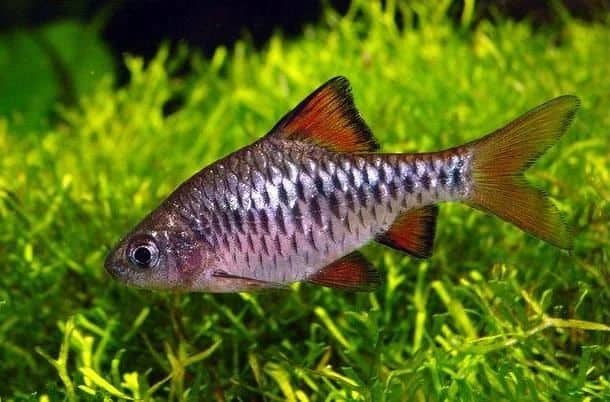
- Scientific name: Puntius oligolepis
- Care level: Easy
- Adult size: 2 inches
- Temperament: Peaceful
- Diet: Omnivore
- Minimum school size: 7
- Ideal tank size for school: 30 gallons
- Standout feature: Checkerboard pattern on scales
The checker barb features a unique checkerboard-like pattern of alternating dark and light scales, giving them a distinctive appearance. They also have visually attractive black-tipped fins.
They thrive in peaceful community tanks with open spaces and many hiding spaces. They could be more picky — they do well with algae, flakes, freeze-dried food, live food.
While generally peaceful, males can sometimes spar with each other for dominance, especially during breeding season. As such, keeping more females than males in a checker barb tank is essential.
While they don’t have the dazzling coloration that others in this list boast, these little guys provide an attractive, low-maintenance, and entertaining school.
Read More:
FAQs
What Is the Tightest Schooling Fish in The Aquarium?
It’s difficult to determine the tightest schooling fish in the aquarium, as the size of the school and their proximity to each other vary by the second. However, it’s safe to say that the bigger the school, the tighter the fish swim together.
What Is the Difference Between Schooling and Shoaling?
Shoaling is a behavioral pattern of a loose group of fishes where everyone stays near each other but does their own thing. Schooling, however, is when fish of the same species swim in tight groups and move in one direction.
What Is the Minimum Number in A School?
There are variations per species, but a good rule of thumb is to get at least six individuals for a schooling species for them to start feeling safe. The more fish, the better.
Conclusion
Having a well-kept, thriving, and beautiful schooling species is one of the most coveted honors in the hobby.
It takes a lot of work to begin, though. There are tons of freshwater schooling fish out there, so we understand that choosing can be overwhelming.
Still, that shouldn’t hinder you from planning. This article gave a highly detailed and credible list of the most popular, fascinating, and beautiful schooling fish. Now, you have everything you need to pick the right schooling fish for your aquarium!
